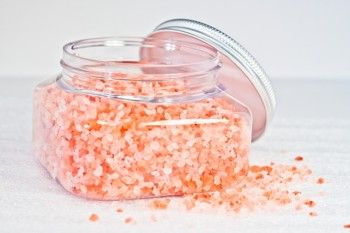Crystal salt – Salt is not equal to salt
Only samples of the crystal salt are examined, which were bought by the promotion association in the trade and thus correspond to the quality, which is offered to the consumer in the store.
For reasons of objectivity, the samples provided by traders were not taken into account in the quality tests.
The sponsoring association has a state-approved food laboratory (Labor Dr. Böhm, Munich) was commissioned with the analyses of the samples.
Here, the results of the certificates of analysis submitted by the producers often differed significantly from those of the laboratory commissioned by the promotional association.
Some salt suppliers have been unable or unwilling to provide requested information material, despite multiple requests for information.
Appearance, smell and taste
Appearance: Transparent, pink or reddish crystals, no impurities, slightly pink ground or granulated salt
smell: neutral
taste: mildly salty
Proof of origin
The country of origin of the salt is indicated here. If the salt is processed in another country, the country where the processing was done is considered the country of origin. Therefore, the original origin of the salt is often difficult to determine.
Some salt importers do not even name the area, let alone the mine, from which they obtain the salt.
Crystal salt – mining method and processing
The crystal salt must be mined and processed by hand, washed in brine and sun-dried.
This procedure is necessary because it is the only way to preserve the valuable biophysical properties of the crystal salt.
The high price of the quality crystal salt can only be explained and justified by this complex procedure.
Codes Alimentarius
In the Codex Alimentarius for table salt, it is legally regulated which criteria must be fulfilled for salt to be offered as a foodstuff.
The following points are of particular importance:
- Sodium chloride at least 97,
- Arsenic less than 0.5 mg/kg,
- Copper less than 2.0 mg/kg,
- Lead less than 2.0 mg/kg,
- Cadmium less than 0.5 mg/kg,
- Mercury less than 0.1 mg/kg.
Due to the method-related analysis tolerance, sodium chloride values up to at least 96% are tolerated.
Biophysical analysis
Proven effects of crystal salt on the human organism.
Different biophysical examination methods are available, with which the bioenergetic condition of the organs can be measured.
These include, for example, segmental diagnostics or electro-acupuncture according to Dr. full, with which energetic potentials at the acupuncture points can be measured on the basis of skin resistance measurements, which allow a conclusion to be drawn about the condition of the individual organs.
With measurements before or. after drinking the brine, the effect of the crystal salt can be demonstrated.
Crystal salt – distribution channel and market availability
Only crystal salts that are available in specialized stores or have a wide dealer network are taken into account.
Conclusion
Of all the crystal salts, some of which have been tested several times, only two importers have fulfilled the criteria listed above.
Often the requirements for table salt (Codex Alimentarius) were not met; bioenergetic studies were available only for the two excellent crystal salts.
The Förderverein will constantly monitor the recommended crystal salts for consistently good quality,resp. also examine the salts, which did not correspond so far to the criteria of the promotion association and lend if necessary the quality seal.
It is gratifying that the activities of the support association have strengthened the quality consciousness of the consumers and have led to a rethinking of the dealers and importers in the direction of quality.
